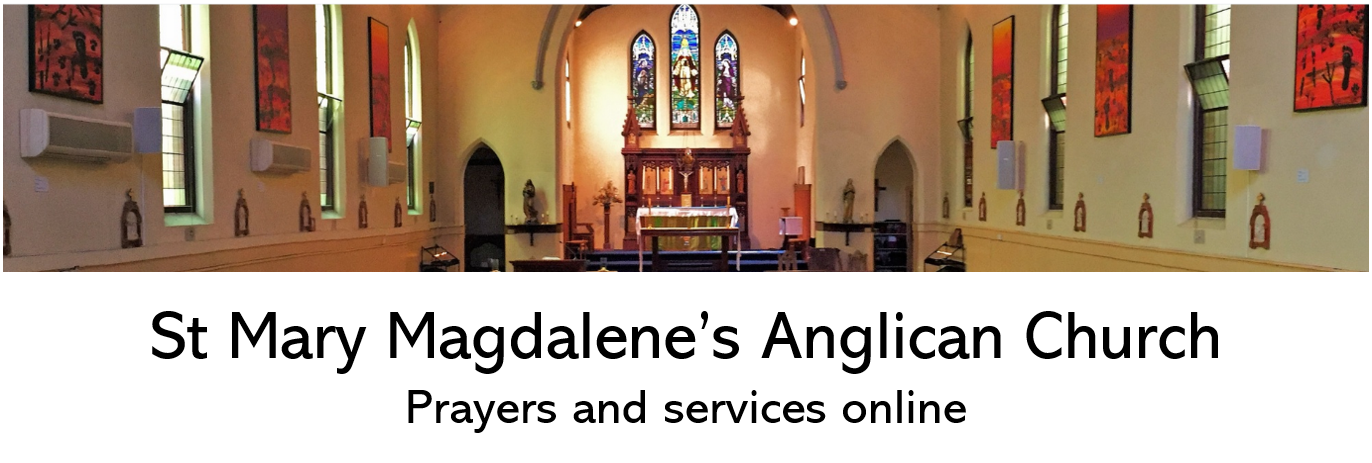We are a marvelous mixture of well-being and woe.
Julian of Norwich

My inconsistencies are but the revelation of who I am. …I am full of contradiction: to realize it is mercy, to accept it is love and to help others do the same is compassion.
Thomas Merton
…behind and beneath the smooth wheels of the socially constructed world are two abiding facts: unreconciled pain and unexhausted compassion.
Rowan Williams
There are only two feelings…two languages…two activities…two motives…. Two results: love and fear.
Michael Leunig
Peace and love are always in us, living and working. But we are not always in peace and love.
Julian of Norwich
Image: Monika Liu Ho-Peh The Stilling of the Tempest
Thomas Merton says that for Julian “the heart of theology [is] not solving the contradiction, but remaining in the midst of it, knowing that it is fully solved, but that the solution is secret, and will never be guessed until it is revealed”. Again and again we are invited in the gospels and in the Christian tradition not to “trap” Jesus in propositions about him, but live out of the dispositions (or attitudes) that lead to life and freedom.

Laura James 
He Qi
Julian says that there are two truths: “we are not always in peace and love” which is the lower truth or relative truth: and “peace and love are always in us, living and working” which is the higher truth or absolute truth. Both are true. Never deny the lower truth, but never, never forget the higher truth. When we live out of the higher truth we live our true vocation to be ourselves, fully alive, fully human and free.

In God’s sight we do not fall; in our own sight we do not stand; and both of these are true as I see it.
The way our Lord sees is the higher truth.
Julian of Norwich
Get in touch with the inconsistencies and contradictions in your life.
How have you lived with them?
What graces and dispositions would you need to live creatively into the fruitfulness and paradox of the Paschal Mystery, of “dying, and behold, we live”.

John Augustus Swanson 
Utagawa Kuniyoshi
Listen as this “Handcrew” of Samoans do what all Polynesians love to do when physically performing a task: sing. Their voices harmoniously echo through the forest as they approach their day’s end in a symphony praising God for his protection and guidance over them.
Image details.
Ketut Lasia Meredakan Angin Ribut (Calm The Storm)
The image at the top of this post comes from Ketut Lesia, a Balinese painter born into a Hindu family of rice farmers. He says ‘…I asked myself what I as a painter might do to honor God and to proclaim the Gospel. For pastors or teachers that seemed simple: they could preach or tell of the life of Jesus, but what could I as a painter do? I really didn’t know how I could place my gift into God’s service.
…for me as a painter I could try to paint Biblical stories, in the same way that I had previously painted Balinese scenes….The people acting in the Biblical stories I painted as Balinese men and women in the typical Balinese environment. While doing so I retained the Balinese ‘ornamental’ style of painting that is so normal and natural to the people here.’ (Find the full interview here)
Monika Liu Ho-Peh Jesus Calms the Storm
Liu Ho-Peh was trained at the Art School of Furen Catholic University by Luke Chen Yuandu who was a pioneer of the Chinese ‘inculturation’ of Christianity in the arts. This was a movement away from the colonial associations and European forms of missionary culture towards the expression of Christian concepts and iconography in an authentically Chinese idiom.
Laura James Jesus Calms the Storm
Her African and Caribbean-American heritage and her love of stories and colour are all elements present in the work of Laura James
He Qi Peace Be Still
The innovative Chinese artist He Qi talks about his aim to bring sacred Christian art to the people of China. He Qi developed this passion, and his painting skills, as a teenager during the Cultural Revolution in China in the 1960’s. Decades later, with a doctorate in religious art from Nanjing University, He Qi still attracts controversy from many quarters, but says that the peace he derives from his work, and his beliefs, is worth the struggle.
Ethiopia, Lake Tana, Amhara Region.
A wall mural in the Church at Debre Selassie Monastery. Jesus sleeps while crossing the Sea of Galilee before
calming the stormy waters.
John Augustus Swanson The Storm
Swanson’s unique style is detailed, complex, and elaborate. It is influenced by the imagery of Islamic and medieval miniatures, and of Russian iconography; the color of Latin American folk art; and the tradition of Mexican muralists.
Utagawa Kuniyoshi Nichiren Calming the Storm
Kuniyoshi was one of the last great masters of the Japanese ukiyo-e style of woodblock prints and painting. The range of Kuniyoshi’s subjects included many genres: landscapes, beautiful women, Kabuki actors, cats, and mythical animals. He is known for depictions of the battles of legendary samurai heroes. His artwork incorporated aspects of Western representation in landscape painting and caricature.
For a printable PDF of the text of this meditation please click on the link here.




